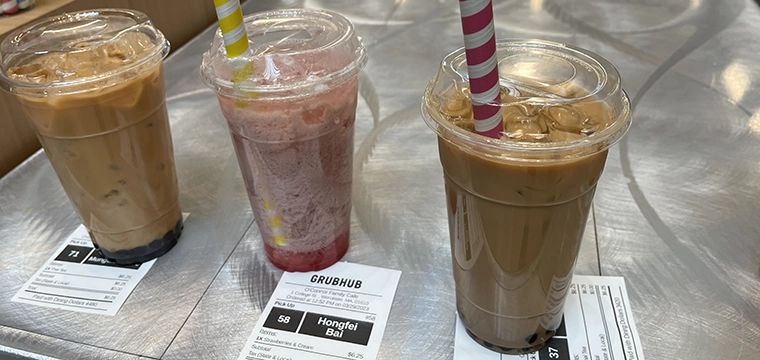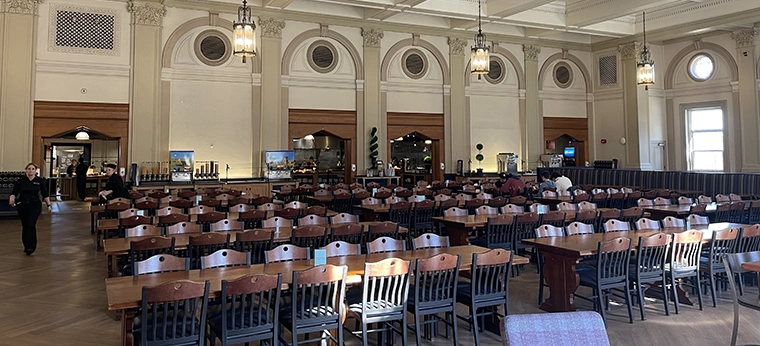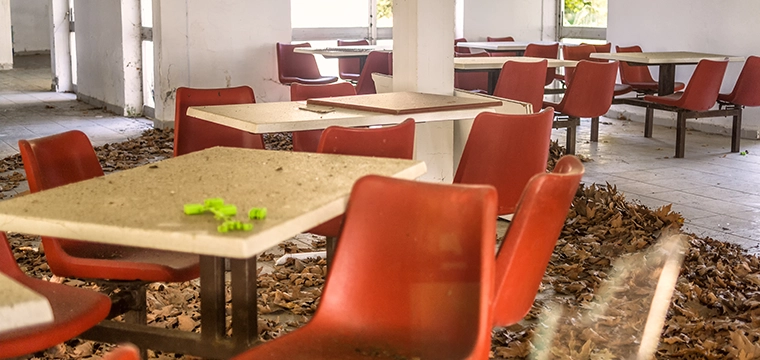
Grubhub solution alleviates bottlenecks; enables key facilities to double sales
At Holy Cross, dining operations faced a challenge. Eighty percent of all transactions were handled at the residential dining facility, leading to overcrowding, frustration, and complaints.
It was clear that the main location was overburdened, and the dining team needed a way to distribute students more evenly across campus. They decided to revise menu offerings and use Grubhub’s mobile ordering platform to encourage students to explore different dining locations.
It did not take long to have an impact. Mobile ordering quickly gained traction, and the long lines began to shrink.
Students were placing orders from their phones while in class, at the gym, or studying. Then they would pick up their meals without waiting in line.
We switched one of our locations to mobile only, and we doubled the volume in that location.
"We realized, wow, mobile ordering is really starting to go up,” says Rich Perna, executive director of Dining, Hospitality & Auxiliary Services at Holy Cross. “Students started to frequent our other locations, and it made it easier for them to get food."
An additional challenge arose when Holy Cross decided to upgrade its point-of-sale (POS) system. There were concerns about integrating mobile ordering alongside the new system, but the Grubhub platform allowed for a smooth transition.
Holy Cross next decided to add mobile-only ordering stations in several dining locations.
"We ended up switching one of our locations to mobile only, and we doubled the volume in that location,” says Perna. “The staff loves it, and it has maximized our efficiency."
Mobile ordering didn’t just benefit students. It also improved the efficiency of dining staff. Before the shift, staff had to juggle tasks such as taking orders, processing payments, and preparing food.
Now they focus solely on preparing food, as orders are received electronically, and payments made via the app. This streamlined workflow allows them to manage higher volumes with less stress.

Residential dining facility at Holy Cross University
"Our staff does not complain that they're doing double the amount of volume," says Perna. "They actually say this is much better because they're not running around anymore."
Digital screens displaying orders have reduced unnecessary movement in the kitchen. Staff can stay in place, preparing orders and placing them on the counter for pickup. Fewer manual steps let them serve more customers efficiently.
Building on the success of the first mobile-only facility, Holy Cross expanded the concept to two additional locations. As with the initial location, the change enabled dining staff to serve more students in less time.
Holy Cross’s meal plan structure is key to the high participation rate. Students with unlimited meal plans can use extra meal swipes via Grubhub without incurring additional costs. This is an extremely popular option.
The use of mobile ordering surged, and today, nearly 100% of Holy Cross students use Grubhub at least once a day.
New integrations like these increased student engagement, and mobile ordering surged. Today, nearly 100% of Holy Cross students use Grubhub at least once a day.
"These students today, this is what they want to do,” stresses Perna. “They want to order from their phone. They don't want to order in person.”
The increased use of mobile ordering increased food consumption and cost, but Perna says the overall financial impact has been positive.
The convenience of the Grubhub offering increased credit card sales from faculty, staff, and campus visitors. These new revenue streams help offset the higher costs associated with the rise in student participation.
Year-over-year, sales have seen tremendous growth.
"The greatest part of this growth is being able to get people through these locations quicker," Perna explains. "And a lot of that has to do with Grubhub."
We give every student back at least 15 to 20 minutes a day by not having to wait in line. That time is valuable, it adds up.
He calls it a win-win. Students are more satisfied, more meals are served, and dining operations are meeting budget goals. The net effect is a more successful dining program, with Holy Cross feeding more people more efficiently than before.
When used properly, mobile ordering helps manage peak meal times and reduce bottlenecks. Before Grubhub, students would flood dining locations after class, leading to long lines and delays. Today, students place orders earlier, and staff prepare meals before the rush arrives.
"We give every student back at least 15 to 20 minutes a day by not having to wait in line," Perna says. "That time is valuable, it adds up."
Reflecting on the success at Holy Cross, Perna emphasizes the importance of trusting in the process. Initially, there was hesitation to fully adopt mobile ordering, but the results have been overwhelmingly positive.
For campuses considering a similar shift, he says start small.
"Test the waters with one location or a pop-up event to see how it goes," he recommends. "Once you start to see the benefits and trust the process, the system will work for you."
For Holy Cross, the partnership with Grubhub has been a game changer, he says. It’s transformed dining operations. Mobile ordering has enabled dining services to improve efficiency, student and staff satisfaction, and financial results.




